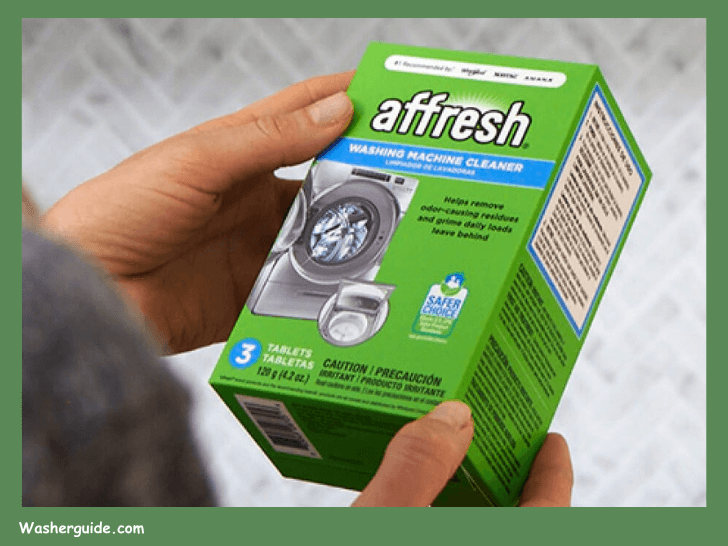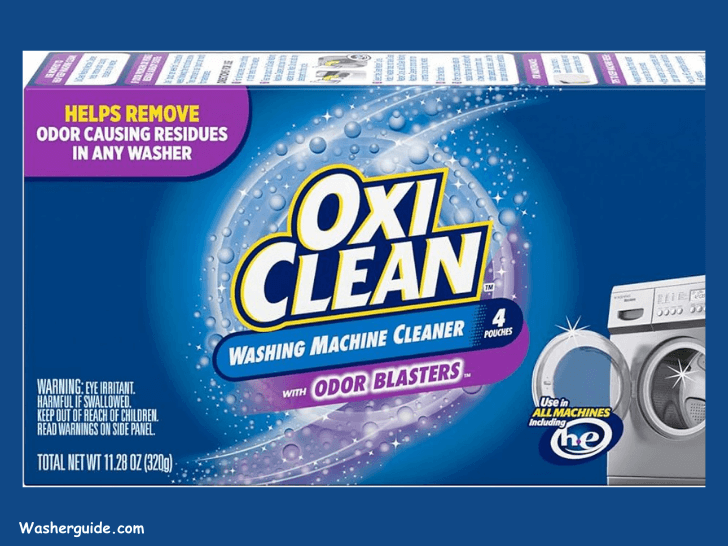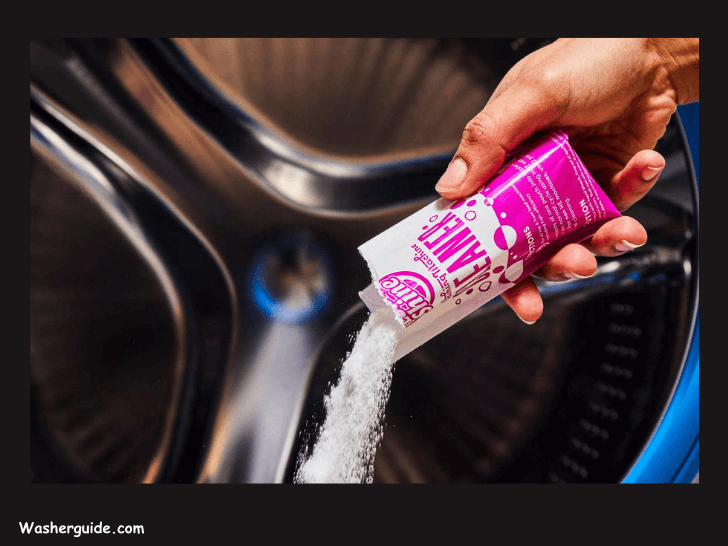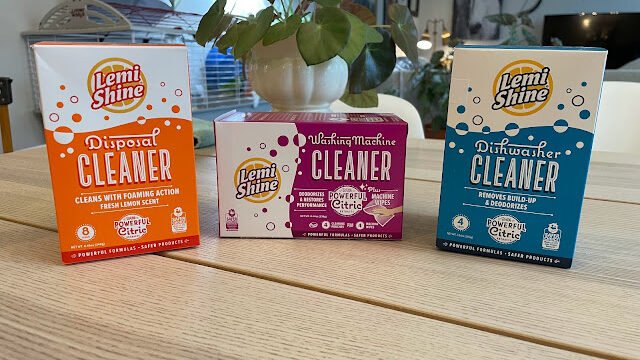Washing machines don’t clean themselves, so using a specialized cleaner occasionally helps keep them in top shape. According to Ron Shimek, president of Mr. Appliance, much like a bathtub, the outer tub of a washing machine can develop a layer of soap scum between it and the inner drum. This layer can trap dirt and oils over time, leading to that unpleasant odor. Regular cleaning helps remove these residues, keeping your washer fresh and efficient.
According to The Spruce, to identify the best washing machine cleaners, they surveyed 180 people who use them regularly. Along with user feedback, they conducted thorough research, evaluating both popular brands and lesser-known options to compile a well-rounded list of recommendations.
Their findings showed that the top-rated cleaners share common qualities: they are easy to use, safe for all types of washing machines, and consistently deliver fresh, clean results. These cleaners make it simple to maintain an efficient washer, keeping it free from grime, odors, and residue buildup.
Affresh Washing Machine Cleaner

Affresh Washing Machine Cleaner is a popular choice for many washing machine owners, and it comes with several advantages that make it stand out. These tablets are widely available, typically priced around $2 per tablet, and work effectively across various washing machine types. According to The Spruce, these tablets received high praise from survey respondents for their ease of use and effectiveness in cleaning both internal and external machine components.
One of the key benefits of Affresh is that it is EPA Safer Choice Certified, meaning its ingredients are safe for both people and the environment. The process is incredibly simple: drop a tablet into the basin and run a cycle. The tablet dissolves and cleans without any scrubbing required. This hands-off approach to cleaning is a favorite among users, although some may be skeptical of cleaners that don’t require more effort.

Affresh is particularly good at targeting common sources of odors and cleaning areas like the washer pump, valve, basket, drum, and filter. Many users report that it eliminates unpleasant smells and leaves their washing machine smelling fresh.
The cleaner is safe for all types of machines, including top-loaders, front-loaders, and high-efficiency washers. However, a small downside is that some users have noticed a bit of residue left behind after the cycle. Fortunately, this is easily fixed by wiping the machine with a damp cloth and running another rinse cycle to clear any remaining residue.
OxiClean Washing Machine Cleaner

OxiClean Washing Machine Cleaner is another trusted name in the laundry care world. Known for its strong stain removers, OxiClean’s washing machine cleaner powder does an excellent job of tackling residue and buildup inside your washing machine. Like tablet-based cleaners, the process is simple—just add the powder to the washing machine basin before starting a cleaning cycle. The key difference is that you sprinkle the powder, instead of dropping it in a tablet.
What sets OxiClean apart is its pre-measured pouches, which remove any guesswork when it comes to how much to use. The scent is designed to resemble fresh laundry, though it can be strong, so those sensitive to fragrances should keep this in mind.

This cleaner is safe for all washing machines, including high-efficiency models, and is septic system-friendly, ensuring no harm to your plumbing or environment. However, it’s a good idea to wipe away any remaining residue from the drum before you load clothes for your next wash, to avoid transferring the powder onto garments.
Lemi Shine Washing Machine Cleaner

Lemi Shine Washing Machine Cleaner offers a versatile two-in-one solution: a powder and wipes combo, both formulated with citric extracts, citrus oil, and sodium bicarbonate. These ingredients effectively remove residue and odors, making them especially useful for people with hard water, as the formula tackles stubborn calcium buildup. This product is also EPA Safer Choice Certified, ensuring it’s safe for both the environment and your household, including pets.
The cleaning process starts with the powder, which cleans the drum and other interior parts of the machine during a hot cycle. Afterward, the included wipes are used to clean areas such as door gaskets on front-load machines or detergent trays. For non-high-efficiency washers, two pouches may be required for the first cleaning.

Lemi Shine leaves behind a fresh lemon scent, although it can be strong, so it may not be for those sensitive to citrus fragrances. Like many washing machine cleaners, some residue may remain after use, but the wipes help to tackle this issue effectively.
This cleaner is suitable for all types of washing machines, making it a reliable choice for general maintenance. However, if citrus scents aren’t your preference, you might want to try another option.
Aunt Fannie’s All-Purpose 6% Distilled White Cleaning Vinegar

Aunt Fannie’s All-Purpose 6% Distilled White Cleaning Vinegar is a powerful and eco-friendly option for cleaning your washing machine. The vinegar’s 6% acidity is more potent than regular white vinegar (which typically has 5% acidity), making it particularly effective against residue and buildup inside your washer. However, this vinegar is not meant for cooking or consumption, so it’s important to use it solely for cleaning purposes.
One of the key benefits of using Aunt Fannie’s Cleaning Vinegar is its environmental friendliness. It’s a safe, natural solution that helps maintain your machine without harming the planet. For a more thorough cleaning, you can pair it with baking soda, which enhances the cleaning process and helps remove odors.
That said, one downside is the strong vinegar smell, which can be overpowering. If you’re sensitive to the scent, Aunt Fannie’s offers scented versions, such as lemon, available in a 64-ounce jug. This can help freshen up your washer while still benefiting from the cleaning power of vinegar.
Before using vinegar, it’s a good idea to confirm that your washing machine is compatible with acidic cleaners, although vinegar generally works well with most models.
Tide Washing Machine Cleaner

Tide Washing Machine Cleaner is similar to OxiClean Washing Machine Cleaner in many ways but comes with a few added features. Like OxiClean, Tide’s formula includes Oxi and follows a simple cleaning process—just sprinkle the pre-measured pouch into your washer and run a cycle. The result is a fresh, clean machine.
What sets Tide apart is the inclusion of additional ingredients such as TAED and zeolite, which enhance its cleaning ability, particularly in hard water. These compounds help to break down stubborn buildup and residue, ensuring a deeper clean.
Another noticeable difference is the scent. Many users have reported that Tide leaves a fresh, pleasant fragrance throughout their home, though this strong scent might be overwhelming for some.
Ultimately, both cleaners are highly effective, but if you’re deciding between the two, consider whether the extra fragrance and hard-water fighting power of Tide appeal to you.
What to Look for in a Washing Machine Cleaner
When selecting a washing machine cleaner, there are a few important factors to consider to ensure you’re getting the right product for your needs:
1. Type of Cleaner
Washing machine cleaners come in various forms, including tablets, liquids, powders, and even wipes. Among these, tablets and powders tend to be the most popular due to their ease of use and storage. Tablets like Affresh Washing Machine Cleaner can be quickly unwrapped and dropped into the machine, while powders are often pre-measured for convenience, as seen with OxiClean.
Wipes, on the other hand, are better for spot cleaning and exterior maintenance but may not be as effective for cleaning the internal parts of the machine. Some brands, like Lemi Shine, offer both powder and wipes together in one package, allowing for a comprehensive clean inside and out.
2. Scent
The scent of a washing machine cleaner can play a big role in your experience with it. Some people prefer unscented products to avoid overpowering odors, while others enjoy the fresh fragrance of citrus or lavender. Eco-friendly cleaners with essential oils are often the best option for those sensitive to chemicals and strong scents. For example, Lemi Shine offers a pleasant citrus aroma, which many users find refreshing.
It’s important to note that even unscented cleaners may leave a residual smell, so if fragrance is a concern, look for products specifically labeled as “fragrance-free” or check user reviews for feedback on scent strength.
3. Plumbing and Machine Compatibility
Before using any washing machine cleaner, always ensure it is compatible with your washing machine type. Many cleaners work for both top-loading and front-loading machines, but it’s essential to double-check. Front-loading machines, in particular, can accumulate grime, mold, and mildew in the door gaskets, so choosing a cleaner that specifically targets those areas is beneficial.
Also, if you have a septic system, be sure the cleaner is septic-safe. Using non-septic-safe cleaners can damage your plumbing, leading to unpleasant odors and costly repairs. Most septic-safe cleaners will indicate this on the packaging, so keep an eye out for that detail.
4. Effectiveness and Eco-Friendliness
While effectiveness is crucial, eco-conscious consumers may prioritize cleaners made from safer, non-toxic ingredients. Products that are EPA Safer Choice Certified (like Affresh and Lemi Shine) ensure that the ingredients used are safe for both humans and the environment. These cleaners work well without harsh chemicals, making them a healthier option for both your home and the planet.
In summary, when choosing a washing machine cleaner, consider the cleaner’s type, scent, compatibility with your washing machine, and eco-friendliness to find the best fit for your cleaning needs.
How to clean a washing machine
Cleaning your washing machine is essential for keeping it running smoothly and free of odors or buildup. While commercial cleaners are convenient, homemade solutions can be just as effective and more eco-friendly. Here’s how to clean your washing machine using both methods:
1. Hot Wash Cycle with White Vinegar or a Cleaner
Start by running a hot wash cycle with an empty machine. Add a cup of white vinegar or your preferred washing machine cleaner. The vinegar helps break down detergent residue, odors, and limescale buildup. If you’re using a commercial cleaner, follow the instructions on the package. Running this hot cycle will help sanitize the drum and remove any lingering grime.
2. Wipe Down the Drum, Door Seal, and Detergent Dispenser
Once the hot cycle is complete, wipe down the interior of the drum, the door seal, and the detergent dispenser with a mixture of warm water and mild detergent. This helps remove any grime, soap scum, or detergent residue that might have accumulated. Pay extra attention to the door seal on front-load machines, as it can trap moisture and create a breeding ground for mold and mildew.
3. Clean the Filter
Next, clean the filter, which is typically located at the bottom or front of the washing machine. Consult your washing machine’s manual for detailed instructions on how to access the filter. Cleaning the filter regularly ensures that your machine is draining properly and helps prevent clogs that could affect its performance.
4. Air Dry After Each Use
To prevent mold and mildew growth, leave the door and detergent drawer open after every use. This allows air to circulate inside the machine and keeps the interior dry. It’s a simple habit that can extend the life of your washing machine and keep it smelling fresh.
How Often Should You Clean Your Washing Machine?
To maintain your washing machine’s efficiency, it’s recommended to clean it once a month using a washing machine cleaner, according to Ron Shimek, president of Mr. Appliance. Regular cleaning helps to remove soap scum, limescale, and bacteria, keeping your machine in great condition. However, if you notice any mold growth, musty smells, or unusual odors, you should clean your machine more frequently to address the issue before it worsens.
Front-loading washing machines tend to need more frequent cleaning compared to top-loaders because the front gasket can trap water, which can lead to mold and mildew buildup. This makes the door seal a key area to check, particularly in high-humidity environments.
FAQs
How do you use a washing machine cleaner?
Most washing machine cleaners are used in an empty washing machine to avoid mixing the cleaner with laundry. Unless the label specifies otherwise, run a normal hot water cycle with the cleaner in the drum. This allows the cleaner to break down detergent, fabric softener, grease, and other residues that build up over time, which can cause odor should you use a washing machine cleaner? As a general guideline, it’s recommended to use a washing machine cleaner once a month. This helps prevent the buildup of detergent, mold, mildew, and odors. However, if you notice more buildup or stronger smells, you may need to use the cleaner more frequently. Factors like water hardness and how often you use your machine can influence how often cleaning is needed.
How do you wash the washing machine?
To eliminate strong odors, use a washing machine cleaner as directed on the label. For persistent smells, run two to three cycles with the cleaner to ensure all buildup is removed. Be sure to clean the door gasket, detergent drawer, and the edges of the drum or tub to fully address the source of the odors.
Can washing machine cleaner solve the efficiency of my machine?
Yes, washing machine cleaners can improve the efficiency of your machine by removing buildup caused by hard water, detergent residue, and odors. Regular cleaning helps the machine run more efficiently, and it also ensures that mildew and musty odors don’t transfer onto your laundry.
